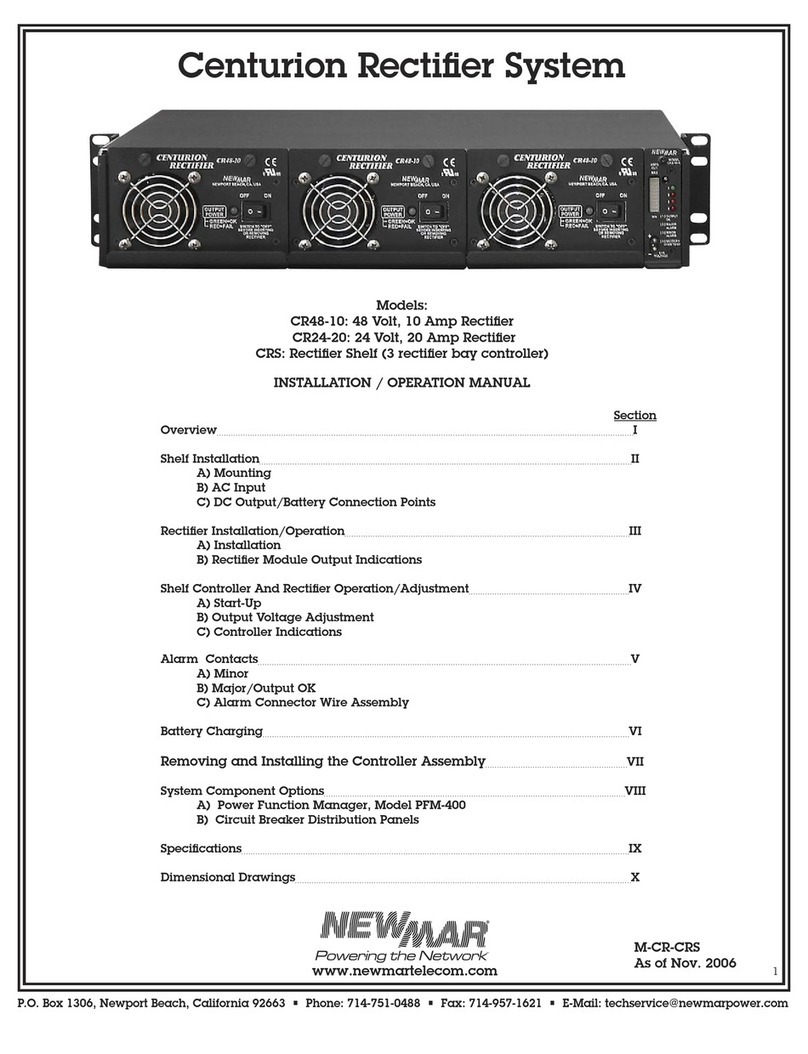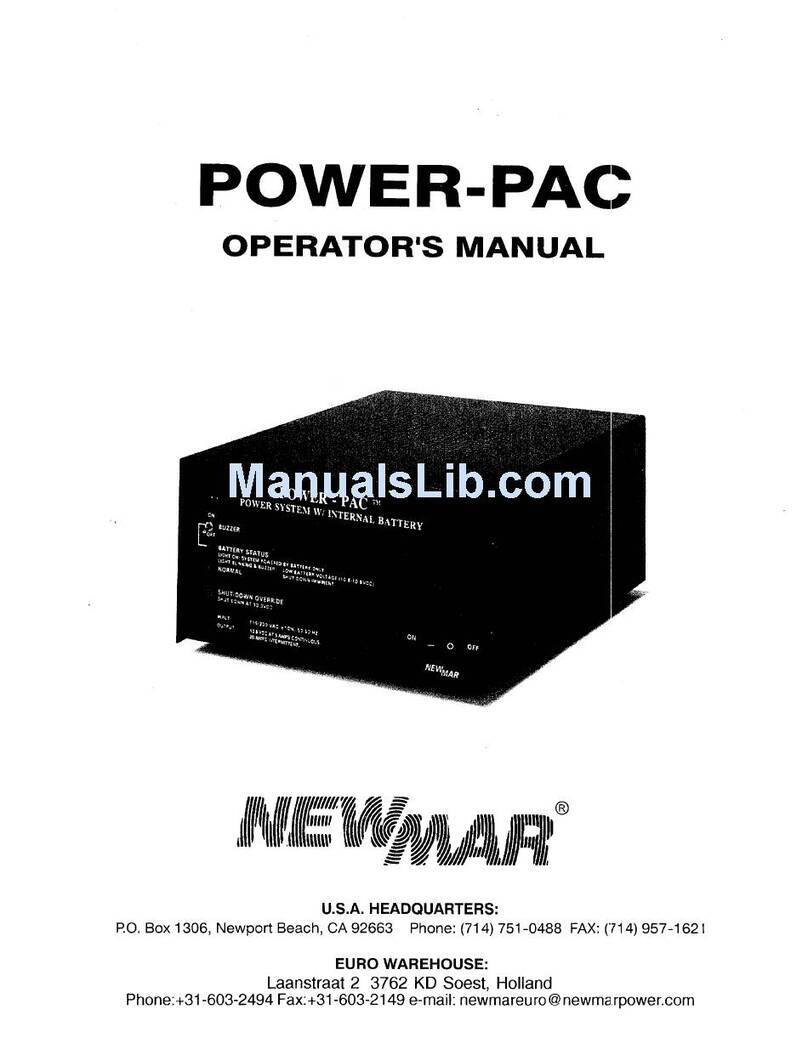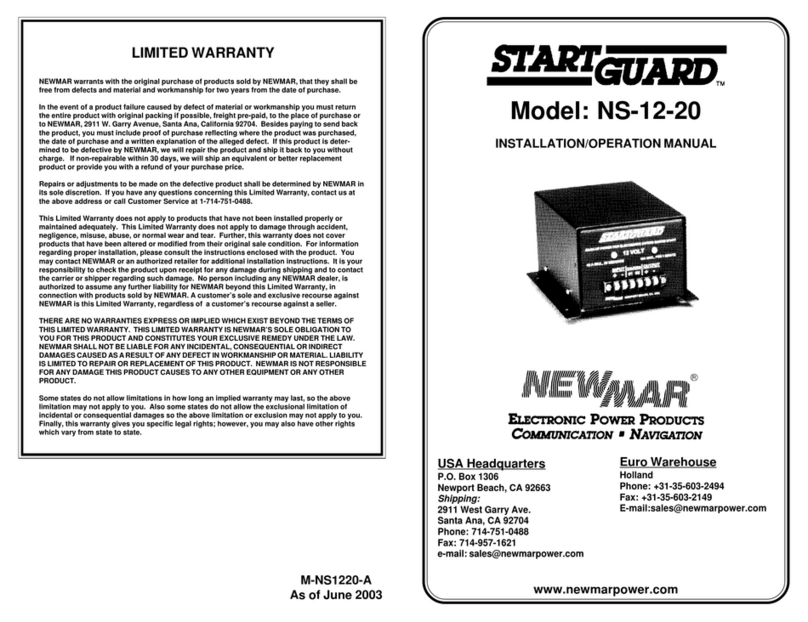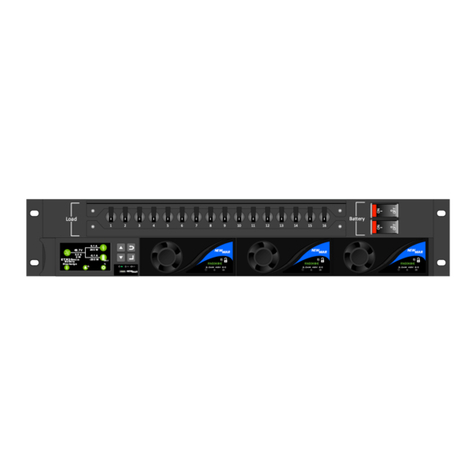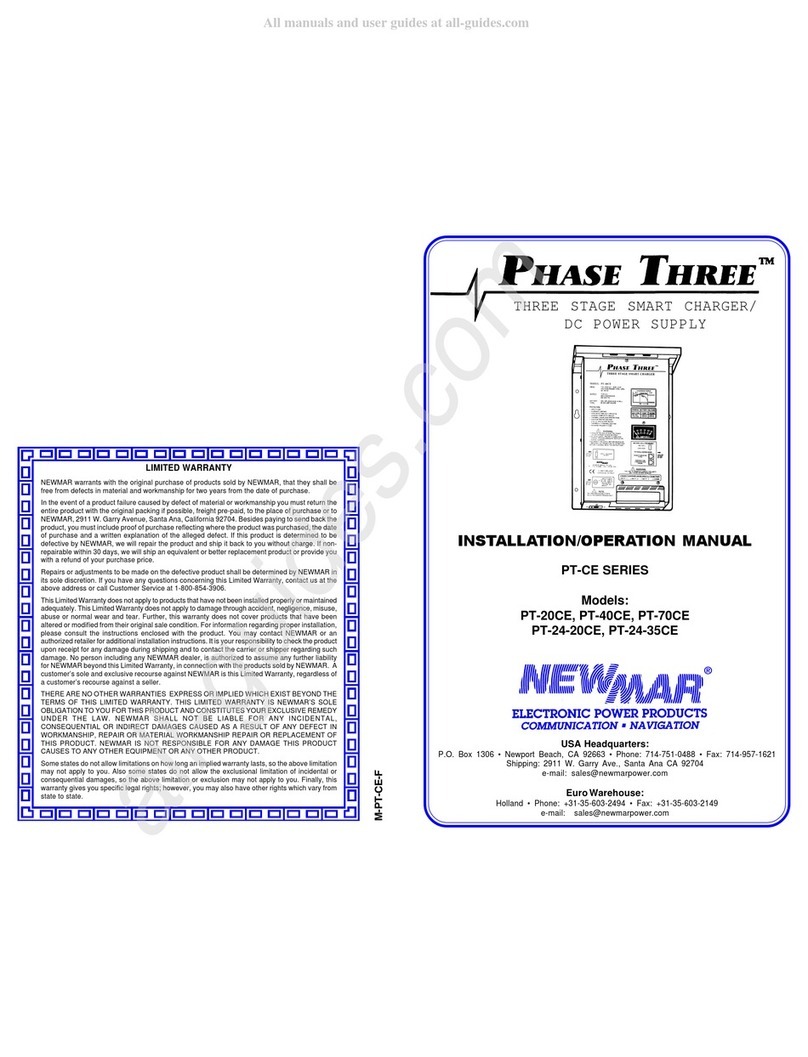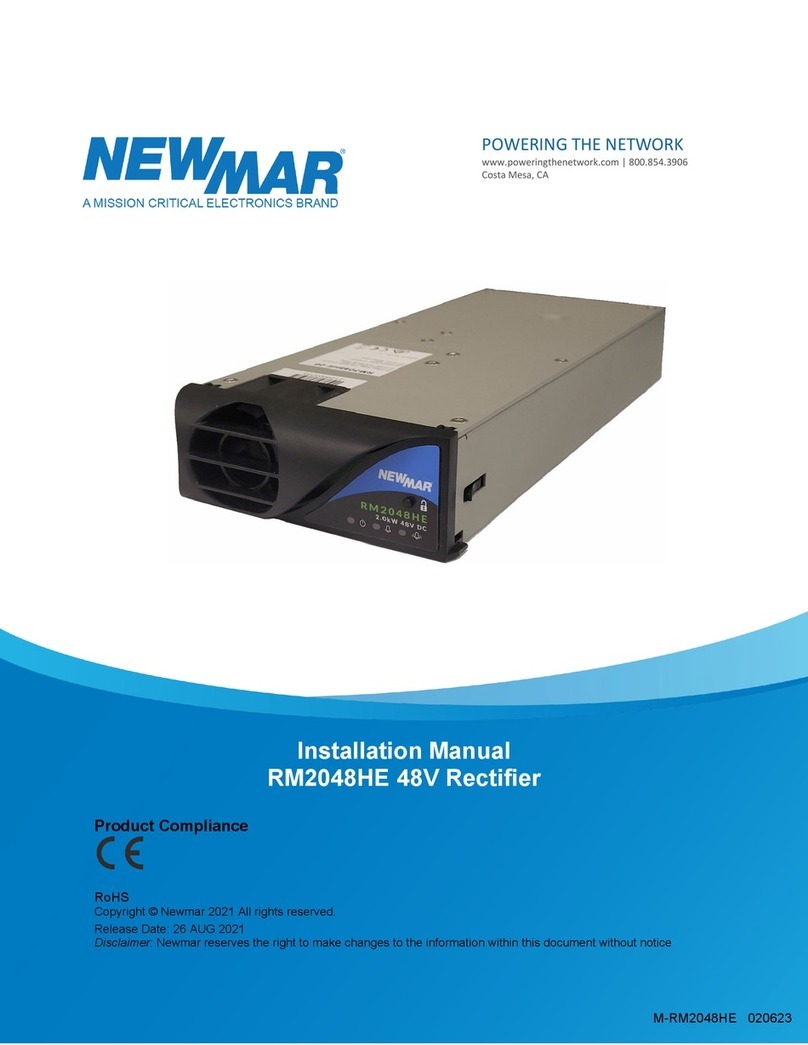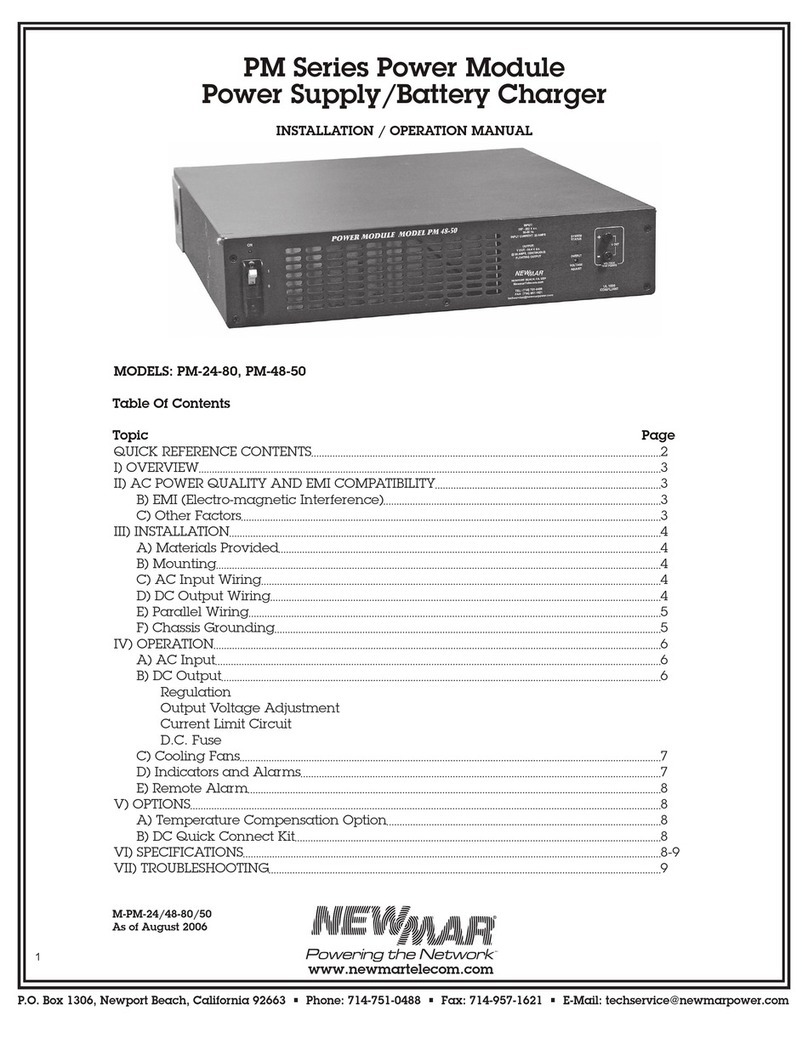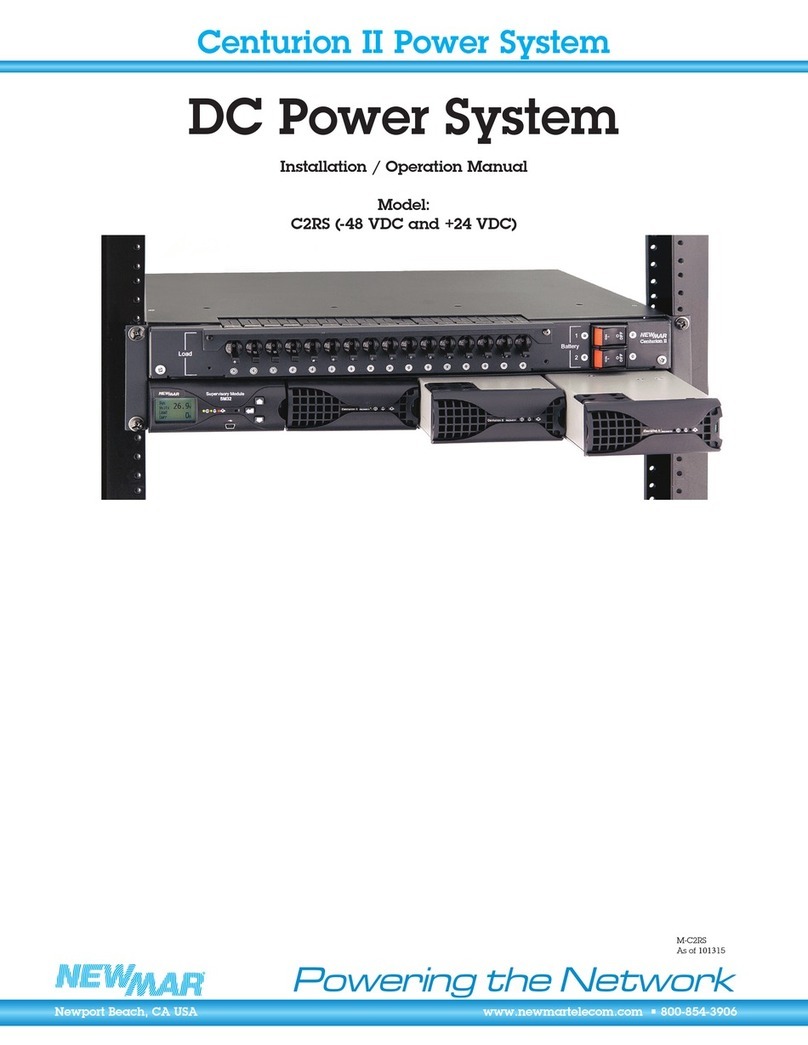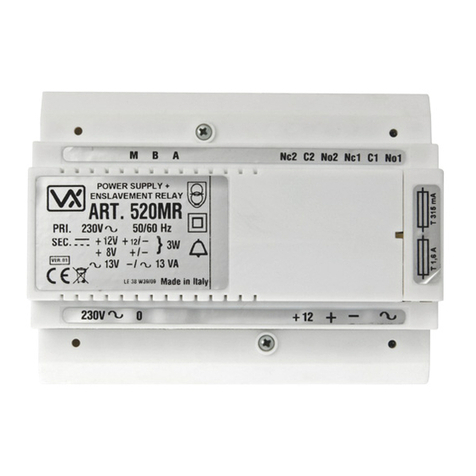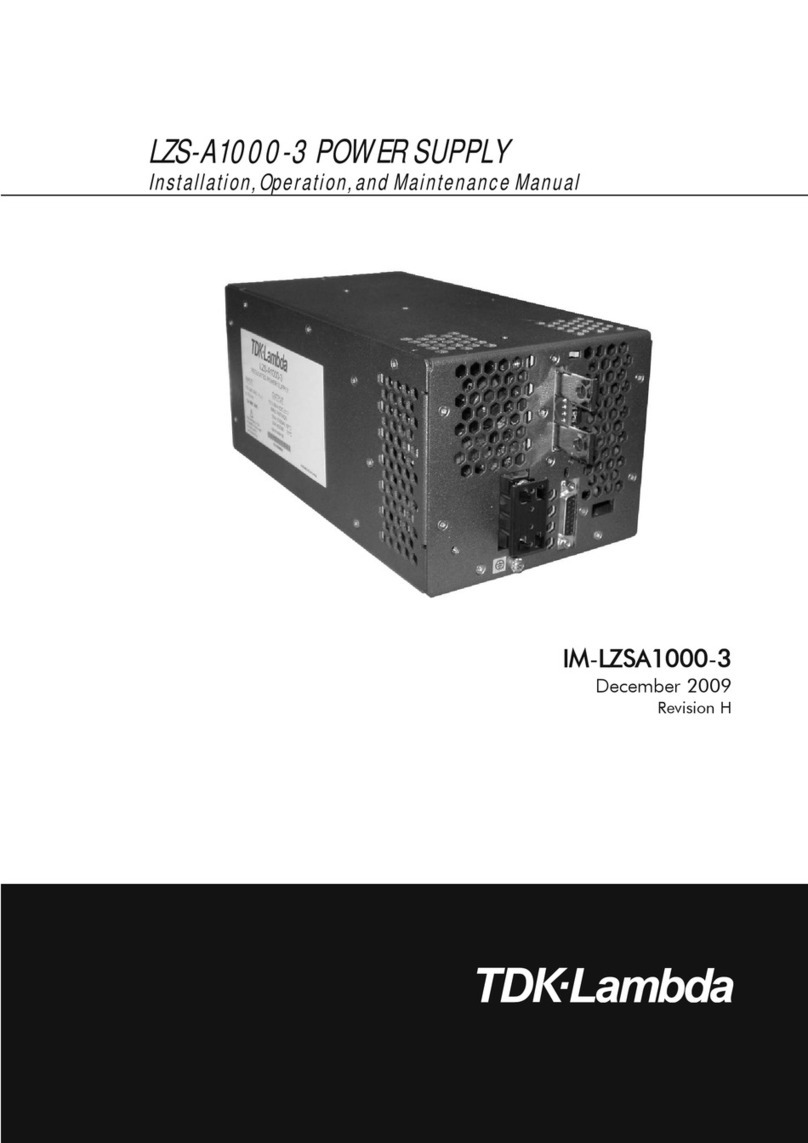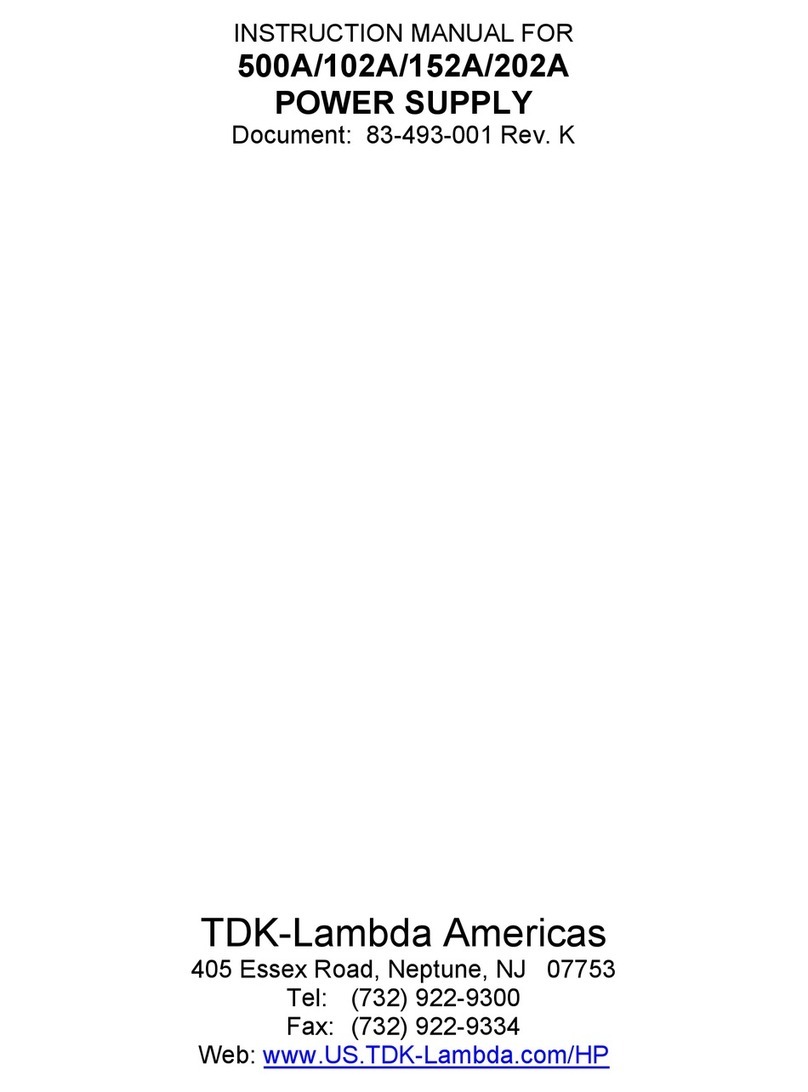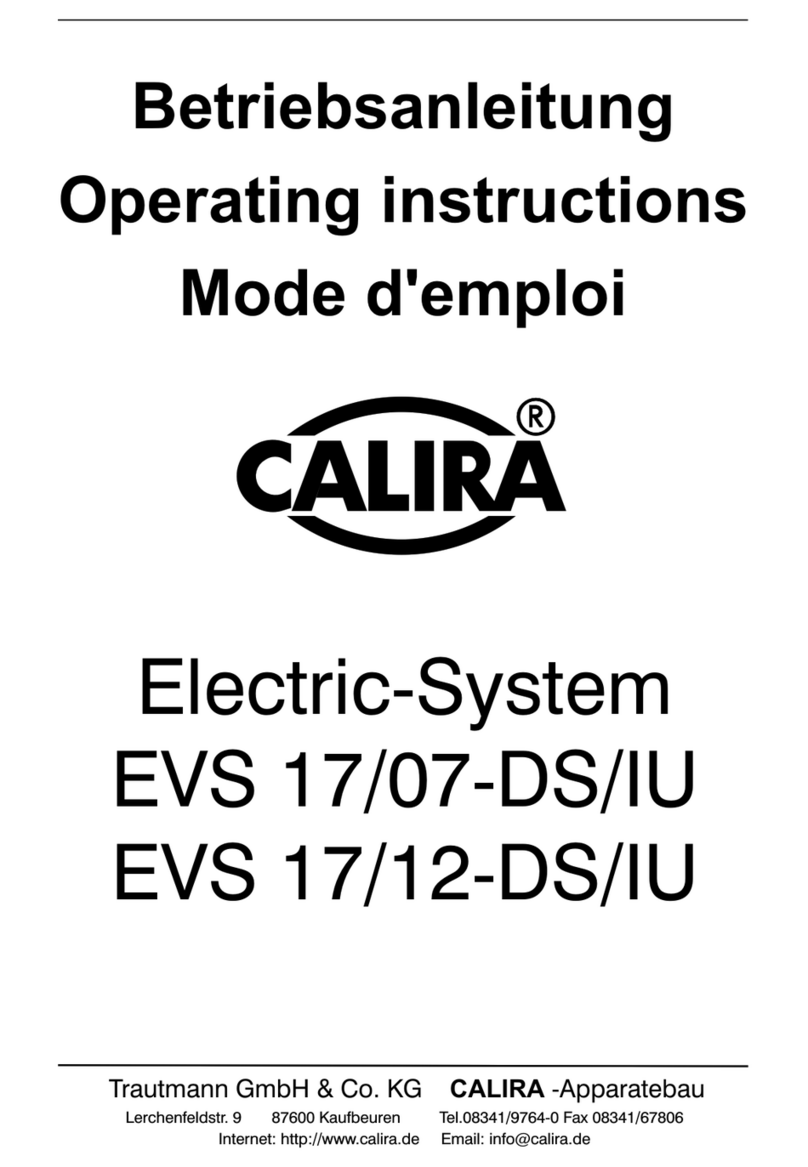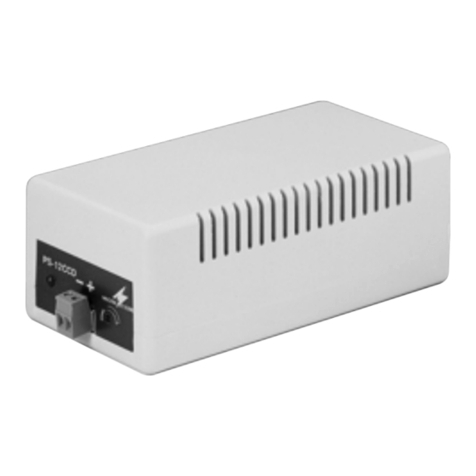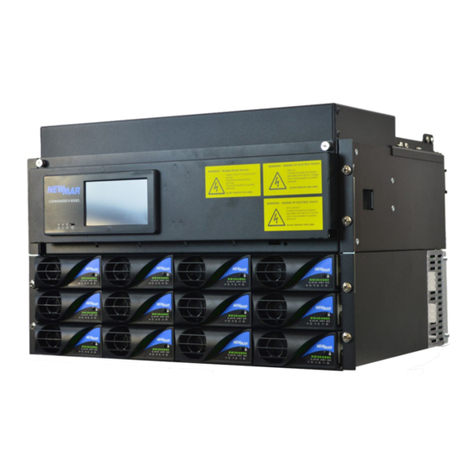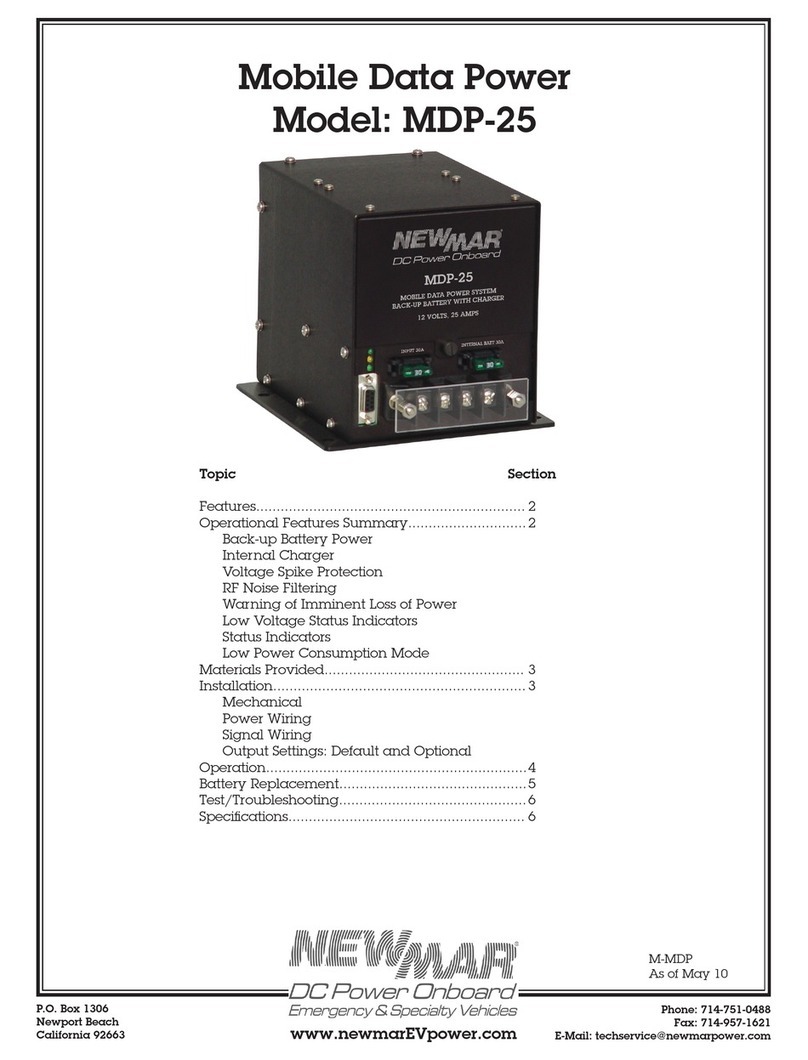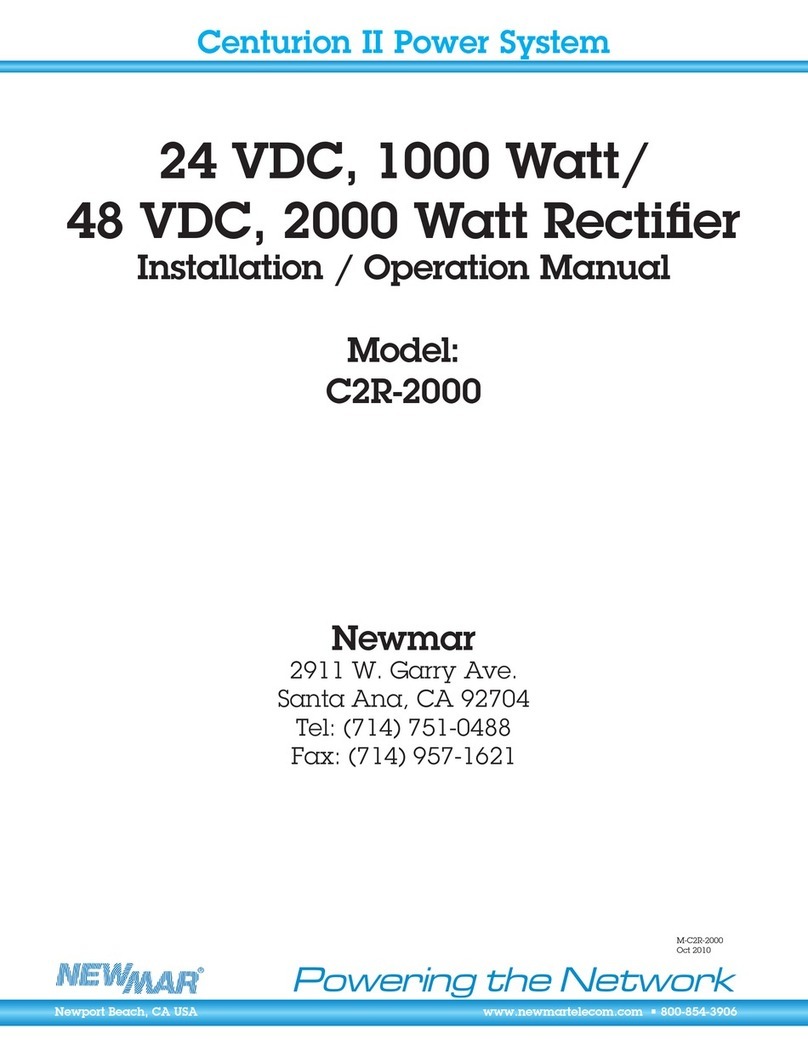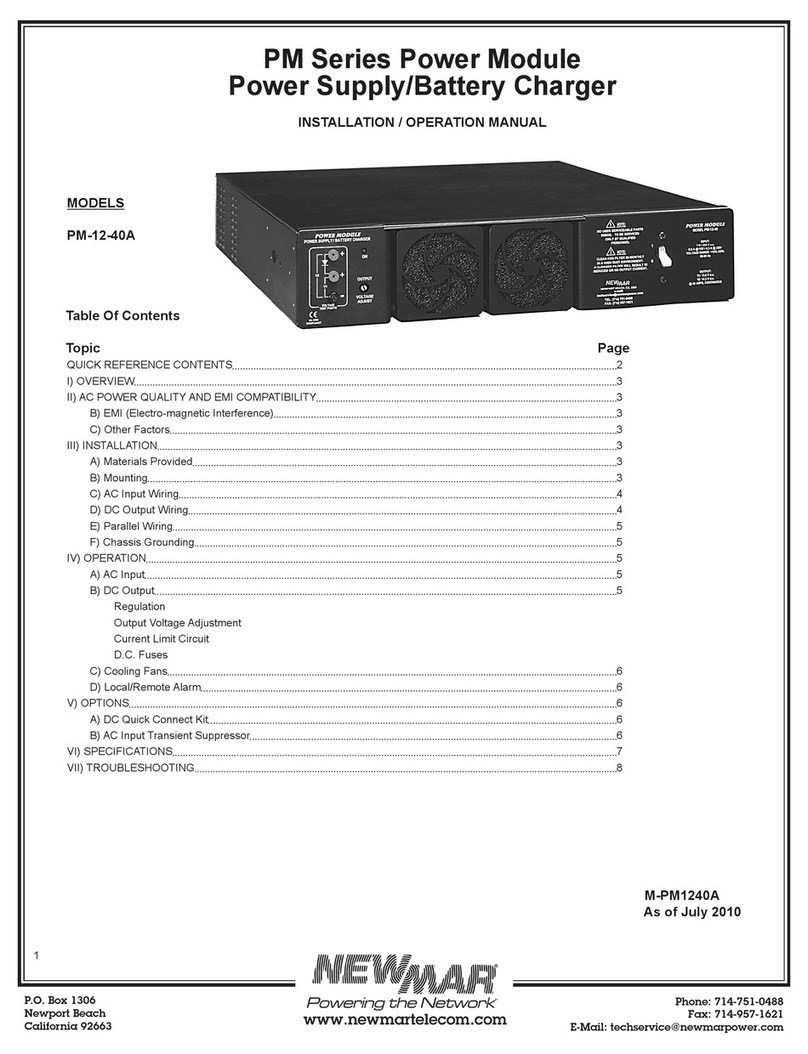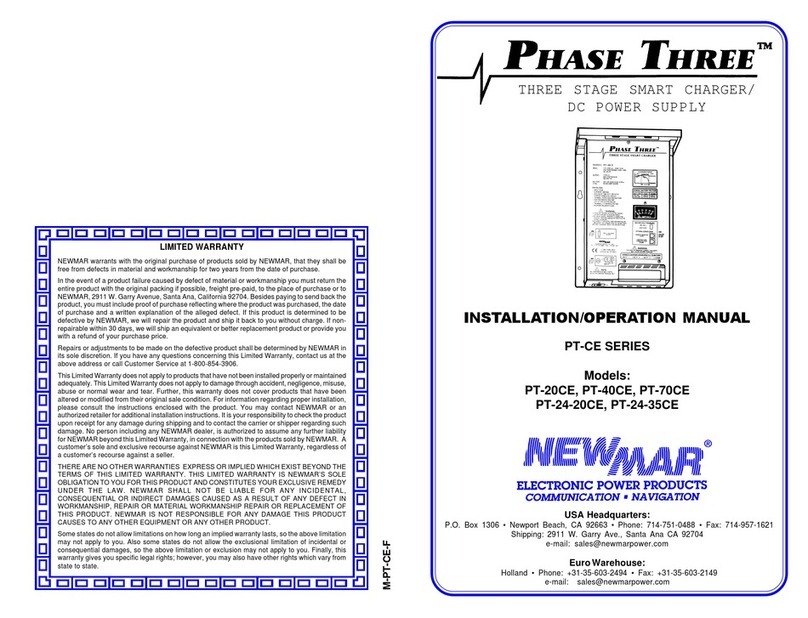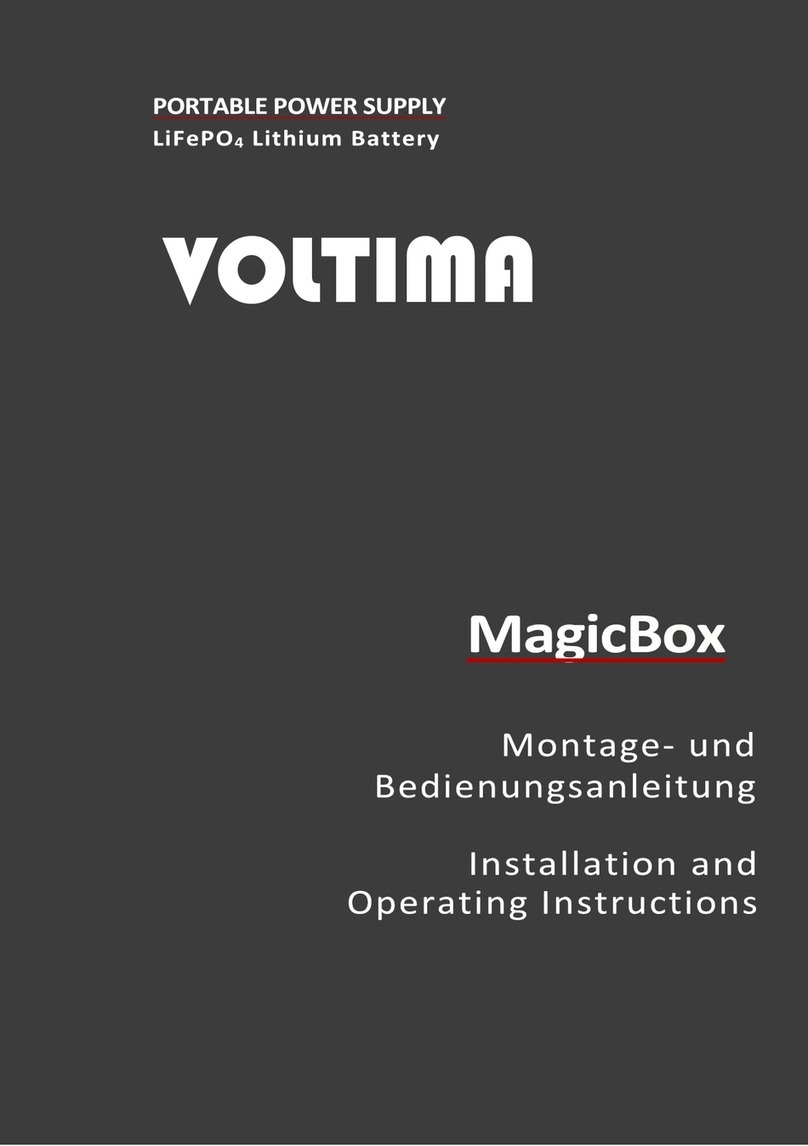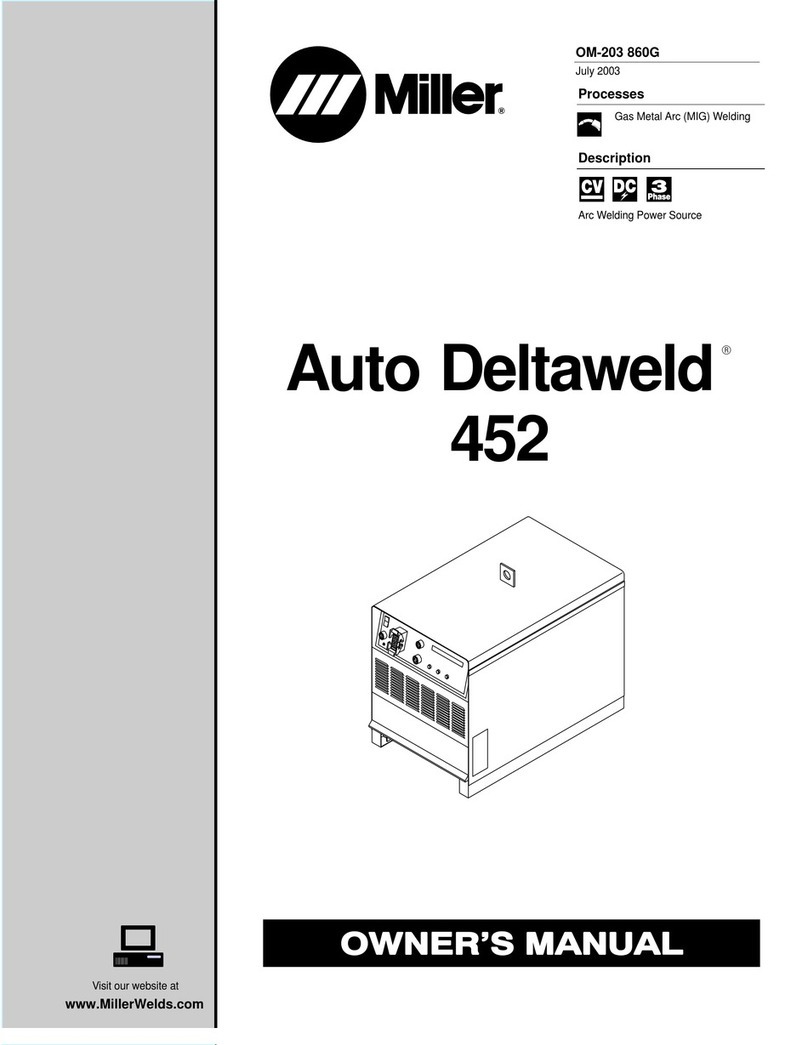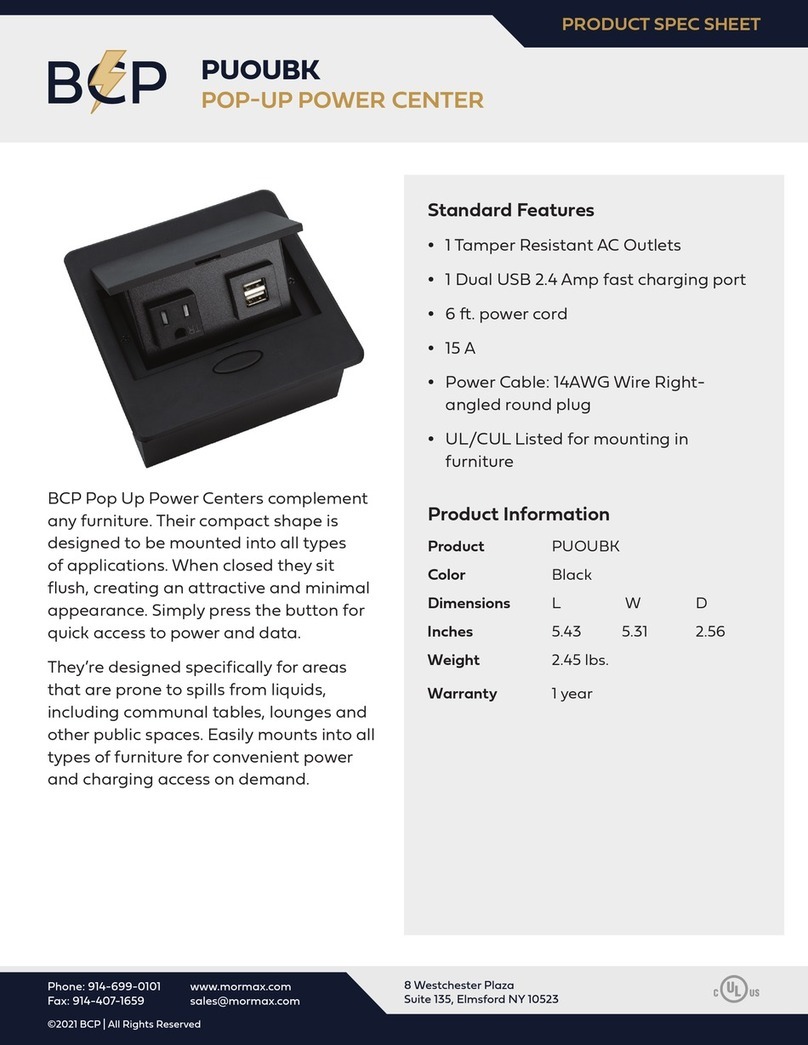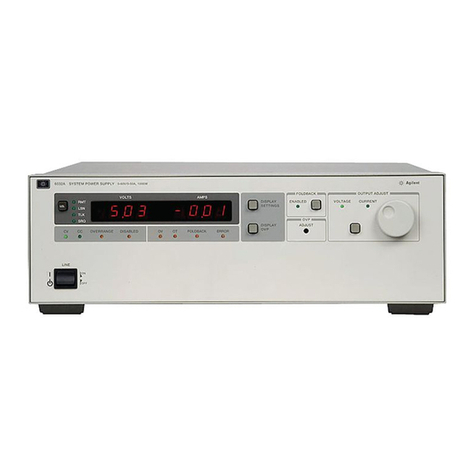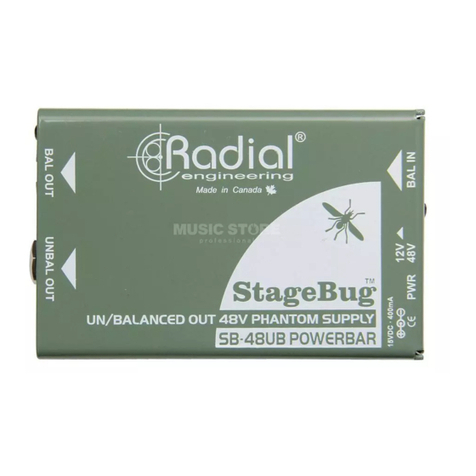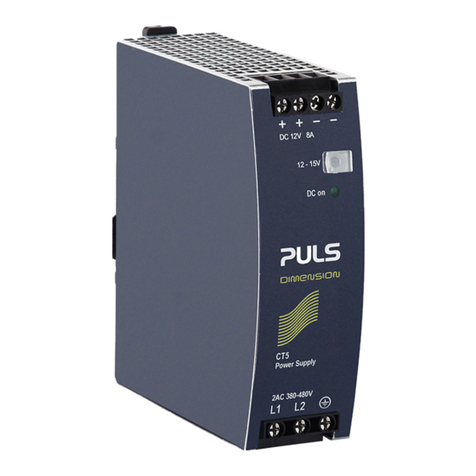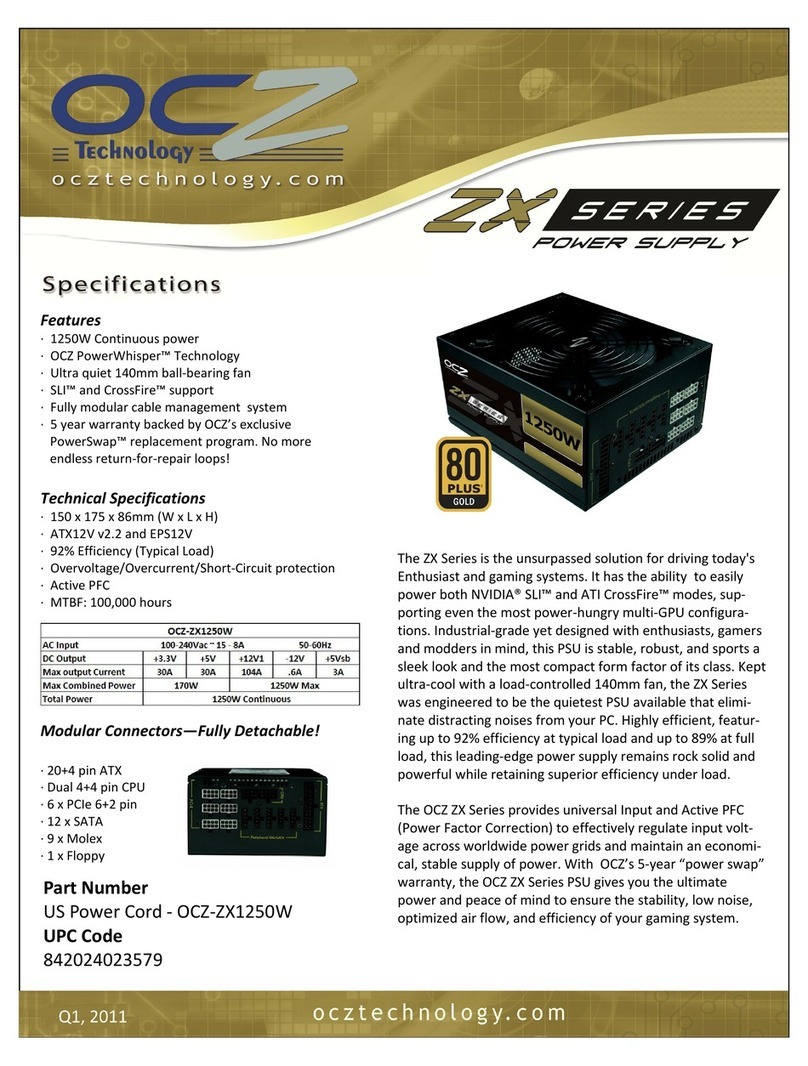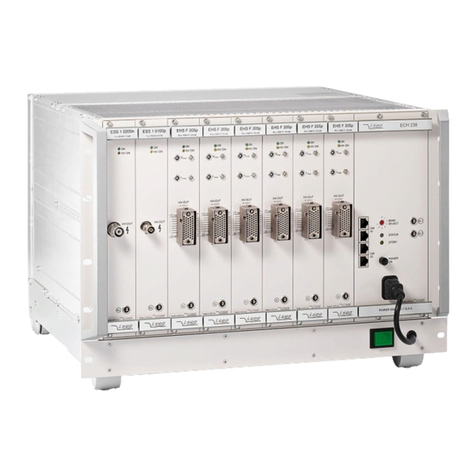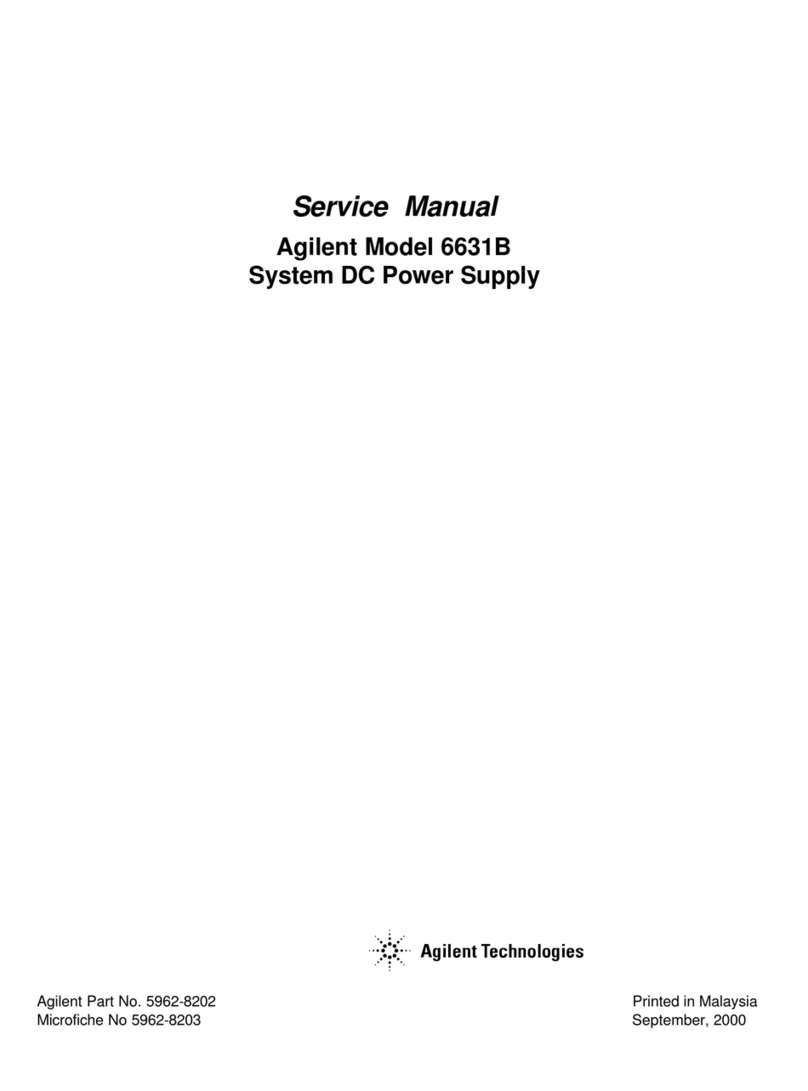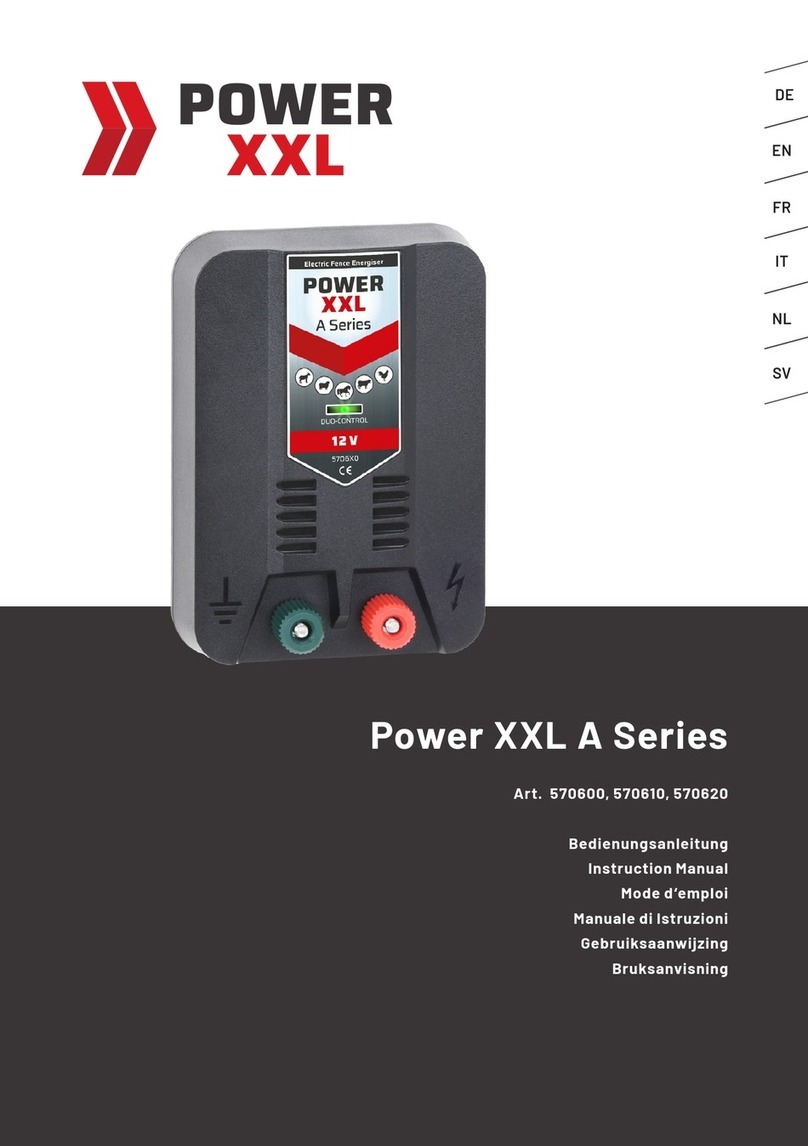
P.O. Box 1306
Newport Beach
California 92663
Phone: 714-751-0488
Fax: 714-957-1621
the “Boost to Float” Current threshold for more than 10 seconds, it will switch to Float Charge mode. If for some
reason the battery charge current rises above the “Boost to Float” Current threshold, the rectier will switch back
into Boost Charge mode (there is no time delay).
A Boost Timer limits the time the rectifier stays in Boost Charge mode. While the SPS is in Boost Charge mode and
in Current Limit, the Boost Timer is inhibited. When the rectier comes out of Current Limit, the Boost Timer starts
and will automatically switch the rectier into Float Charge mode after about 4 hours, even if the battery current
remains above the Boost to Float Current threshold.
The Boost and Float voltages are preset in the factory but may be adjusted to suit the specific battery installation -
see Section 4.2, 4.3.
1.5 Low Voltage Disconnect and Reset
The Low Voltage Disconnect (LVD) feature is designed to protect the battery from deep discharge when the battery
is supplying the load current (i.e. AC is off, or the load is drawing more than the SPS capacity).
The SPS monitors the battery voltage when the battery is supplying current, and disconnects the load from the
battery when the battery voltage falls to a preset level. When the battery voltage has increased above the LVD
Hysterisis voltage the load is automatically reconnected back to the battery.
The LVD may be manually reset when it has operated by pressing the LVD Reset button on the front of the rectifier.
The LVD switches the battery +ve supply (the -v is common with the battery). Do not connect the Battery and Load
+v together.
The LVD voltage and the LVD Hysterisis voltage are preset in the factory, but may be adjusted to suit the specic
battery installation - see Section 4.7.
Model Voltage Adjustment Maximum Load Current
SPS 12-20 9.5 to 12V 20A
SPS 24-10 19 to 24V 10A
SPS 48-6 38 to 38V 6A
Do not exceed the maximum load current, as the LVD circuitry may be damaged. The LVD circuitry is protected
by shutting down if its circuitry is overheated due to over current conditions. Excessive overloading will cause an
internal protection fuse to rupture.
If the LVD functionality is not required, then the load should still be connected to the Load connection on the
rectier, as the rectier senses the current on the Battery connection (not the load) for the Auto Float Boost function.
1.6 Temperature Compensation
A temperature compensation probe with 2 meter cable and pre-attached connector is provided with the SPS.
Batteries require different charging voltages depending on the ambient temperature of the battery. The colder
the battery, the higher the voltage required to charge the battery. The battery temperature is measured
by connecting a Temperature Compensation Probe to one of the battery terminals. The rectifier will then
automatically adjust the charging voltage.
The Temperature Compensation Slope is preset in the factory but is adjustable from 0.1% to 0.2% change in charge
voltage per degree C - see Section 4.8.
If the Temperature Compensation Probe is not connected, then the SPS will assume a battery temperature of 25°C.
1.7 Current Limit
The SPS automatically limits the rectifier output current. The maximum output current is preset in the factory but
may be adjusted down. See Section 4.5.
3

